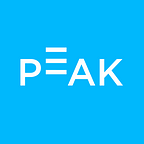An Athlete’s Brain: How Brain Structure Defines Physical Ability
Researchers have found that athletic ability is related to brain structure, not just function.
Stand an average person next to a professional athlete and the athlete will likely look a little, well, different. We’re accustomed to thinking of peak athletes as physically distinct from the rest of us; they can swim faster laps, vault over higher poles, and, if they’re Usain Bolt, run a 100 meter sprint in under ten seconds.
But what if these physical differences extended to their brains? We recently looked at how brain training can help athletes perform better, but recent studies suggest that athletic ability is related to brain structure, not just function.
A 2013 study by a team of neuroscientists at Imperial College London used brain imaging to examine neural differences between black belt karate experts and karate novices. They found that the groups had significant differences in the structure of their white matter (which connects gray matter and carries nerve impulses) in the cerebellum and other areas of the brain that control movements. Variation between individuals corresponded with variation in their years of training experience and their motor coordination abilities.
A similar study investigated the brains of divers. Researchers compared the brains of 12 expert divers (six male, six female) with 12 non-athletes, and found that the experienced athletes had more cortical thickness in several areas of the brain.
One wonders whether learning and practicing a sport causes structural changes to the brain, or whether physical characteristics of the brain cause athletic ability. There’s still plenty to research on this topic, but one study conducted in Germany suggests that learning a new complex motor and visual skill does create physical changes in the brain (albeit transient and in specific areas). Participants in the study learned to juggle. The researchers used magnetic resonance imaging on their brains and were able to visualize changes in their gray matter as the brain adapted structurally to the task at hand, particularly in areas related to the “processing and storage of complex visual motion.”
Studies also show differences in athletes’ brainwaves.
A team at Sapienz University, Rome, tracked the brainwaves of karate champions and of laypeople with their eyes closed. They discovered that the karate experts emitted strong alpha waves, suggesting a more ‘restful’ default state than the non-athletes.
The same team then measured the brainwaves of 18 right-handed pistol shooters and 10 right-handed non-athletes as they fired 120 shots each. The athletes’ brains showed less cortical activity all over the brain before the exercise, except in certain areas when firing successful shots. This suggested a certain “neural efficiency” in the athletes, able to focus cortical activity in specific areas when it counts.
Another study conducted on expert golfers and non-golfers going in for a swing found that the golfers’ brains actually fired in completely different regions while they prepared for their shot. The scientists suggest that the elite golfers performed better because of different neural network organization for motor planning — specifically, that they were able to efficiently plan and filter out irrelevant information, and that they got there with practice.
Want an efficient and focused mind? Get practicing on a sport — and maybe mix in some brain training too.
Click here to share this article with your Facebook friends.
